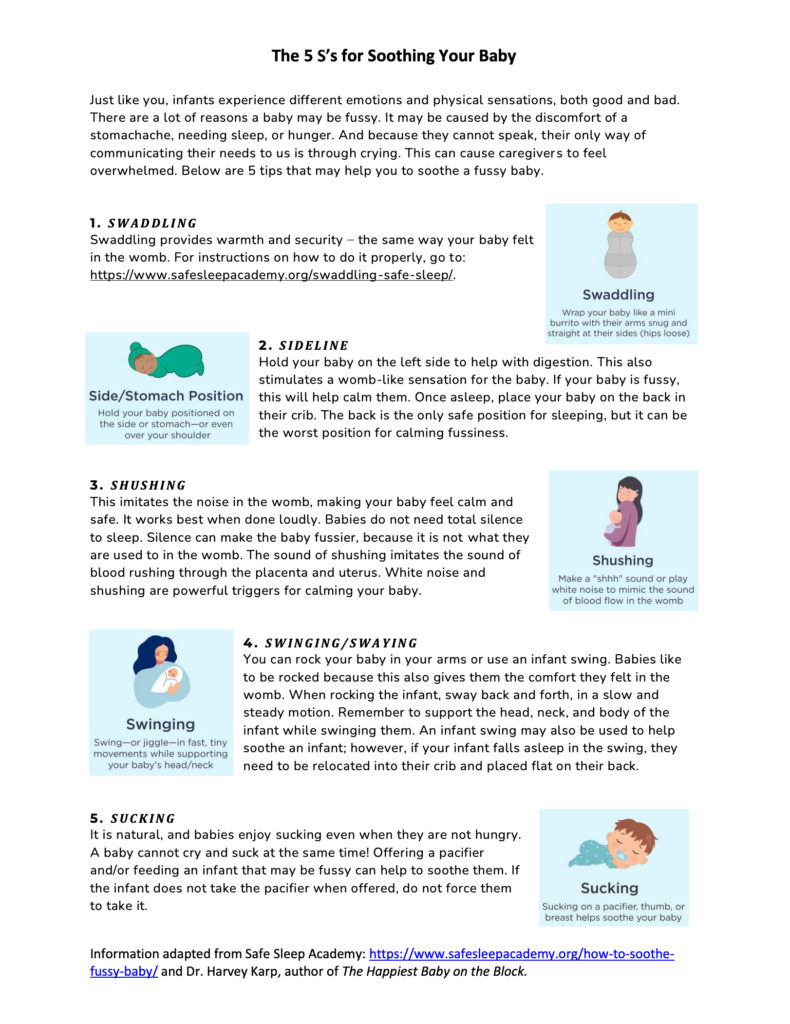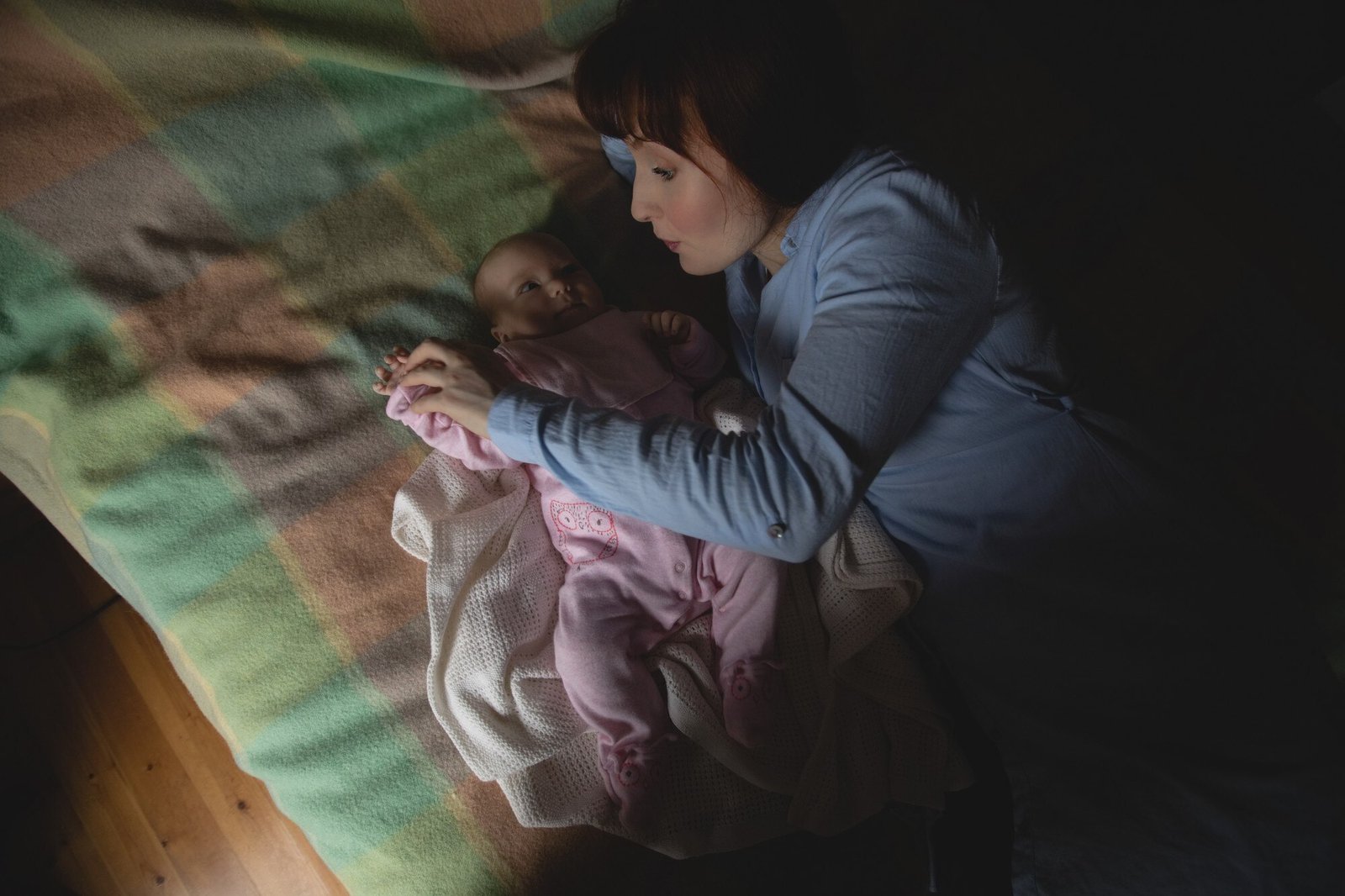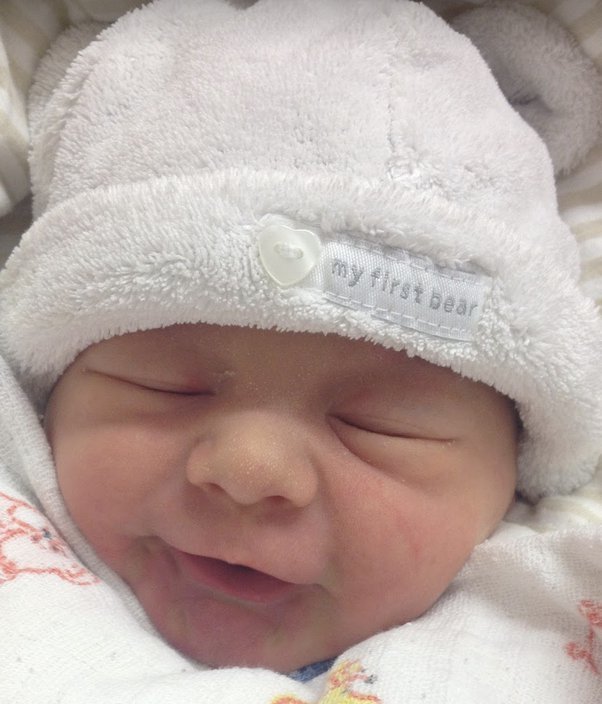You’re Not Missing Something — Crying Happens, Even When Everything Seems Fine
If you’re holding a crying baby right now, and you’ve already run through the mental checklist—fed, changed, burped, warm, safe—and they’re still crying… take a breath. You’re not doing anything wrong. You’re not missing something obvious. And you’re definitely not alone.
Every parent hits this moment. A moment where the crying just doesn’t make sense. And because your baby can’t point or explain or say “my tummy hurts,” it can feel frustrating, helpless, even scary.
Crying is communication. It may not always be clear, but it always means something. And often, it’s not about fixing a problem, it’s about recognizing what’s going on beneath the surface and helping your baby feel safe while they move through it.
This guide is here to walk you through that. Not just the usual list of “why babies cry,” but how to look deeper, spot patterns, and feel more confident—even when the tears feel endless.
Crying Is the Only Language Your Baby Has Right Now
Crying is your baby’s first language. It’s not a malfunction—it’s their messaging system. In the early months, they cry because they literally don’t have any other way to process discomfort, fear, surprise, or need.
Think of what your baby has just experienced: a transition from the warm, muffled, low-light comfort of the womb into a world full of noise, light, temperature shifts, strange sensations, and unpredictable patterns. It’s overwhelming. They don’t know what hunger is, or gas, or loneliness. They just feel something unfamiliar and unsettling—and they cry.
This is why newborns can cry for what seems like “no reason” at all. To them, the reason is real—it’s just not always obvious to us. And because they lack the tools to regulate their emotions or calm themselves, crying often continues even after the need has been met.
It doesn’t mean you’re doing anything wrong. It means your baby is adapting—and you’re their guide.
The Most Common Reasons for Crying (Even If You’ve “Checked Everything”)
The basics matter. Sometimes in our rush to fix the big mystery, we skip over the most common (and fixable) causes of crying. Yes, even if you just fed them or changed their diaper, it’s worth revisiting. Babies change quickly and sometimes the issue is simply timing, they were fine ten minutes ago, but something’s shifted now.
Hunger is one of the most frequent culprits. And not all hunger cries sound desperate from the beginning. In fact, crying is a late sign of hunger. Earlier cues—like rooting, hand-sucking, or restlessness—may have gone unnoticed. If your baby suddenly erupts into tears, try offering the breast or bottle. Even if they just ate recently, it could be a growth spurt day or cluster-feeding moment.
Overtiredness is trickier. A well-rested baby generally drifts to sleep peacefully. An overtired baby, on the other hand, might fight sleep with every ounce of energy they have. Their body can release stress hormones like cortisol, which makes it harder for them to settle. You’ll see red flags like rubbing eyes, turning away from faces, clenched fists, or sudden crankiness.
Diaper discomfort doesn’t always scream “dirty.” A clean diaper that’s slightly too tight, or has a scratchy waistband, or a tiny rash, can cause enough irritation to bring on tears. If your baby seems fine but restless, check again. Even a bit of dampness can be frustrating for a sensitive skin baby.
Gas is another sneaky source of misery. It can happen from swallowing air while feeding, crying, or sucking a pacifier. And not all babies burp easily. Sometimes the trapped air sits in their tummy and causes pressure or cramping. If they cry shortly after feeding or while lying flat, try burping them again—even if you already did. Different burping positions (like upright on your chest, or over your lap) can yield different results.
And don’t overlook temperature. Babies are sensitive to small changes. Feeling too warm—even just from being overdressed—or too chilly can cause discomfort. Try feeling their neck or tummy (not hands or feet, which are often cool regardless) to check for overheating or cold.
The Cry Isn’t Always Physical: Emotional Triggers Are Real Too
We often think of babies as little bodies that need to be fed, changed, and rocked to sleep. But they’re also little emotional beings who experience stress, confusion, and sensory overload just like we do.
Overstimulation is one of the most overlooked reasons for crying. A busy day with errands, visitors, or loud environments (even with good intentions) can pile up in their system. They might seem perfectly fine in the moment, but once the noise dies down or you get home and they’re no longer distracted, the crash happens. It’s like their nervous system says, “Enough,” and the tears take over.
Boredom or lack of stimulation sounds counterintuitive, but babies need just the right amount of interaction.
Too much = meltdown. Too little = restlessness.
If your baby has been lying in the same spot with the same mobile or toys, they might cry just to say, “I need something new.”
Sometimes, they just want to be held. Not because they’re manipulating you, but because your voice, heartbeat, and warmth are the safest things they know. Babies are biologically wired to seek closeness—especially in the early months. So if your baby stops crying when you pick them up, it’s not “spoiling.” It’s regulation.
Even a simple act like a bath, light movement, or a massage can help reset your system. Here’s more on how to support your own nervous system after tension builds up.
Crying at Night? It Might Be the “Witching Hour”
If your baby seems to have a meltdown every evening, almost like clockwork, you’re not imagining it. Many babies go through a fussy period during late afternoon or early evening—what some parents call “the witching hour.”
This crying window can last anywhere from 20 minutes to a couple of hours. It often shows up between 2–8 weeks old, peaks around 6 weeks, and fades by 3 months. And even if your baby has had a great day, is well-fed, clean, and cuddled, they may still fall apart at the end of the day.
It’s likely due to a combination of factors: accumulated sensory input, changes in light, fatigue, and possibly even drops in maternal milk supply for breastfeeding babies in the evening. There’s no single fix, but dimming lights, keeping stimulation low, offering a feed, or holding them skin-to-skin in a quiet room can help.
Why Some Babies Cry While Feeding
This one often confuses parents, because feeding is supposed to be the most comforting time. But when a baby cries during feeding, it usually signals frustration, discomfort, or both.
Some babies struggle with the milk flow—either it’s too fast (especially with certain bottles or let-downs), or too slow, and they get impatient. Others may be trying to eat while tired or already full, and they’re overwhelmed.
You might also be dealing with gas that forms during the feed. Even a small bubble can make suckling painful. If your baby fusses shortly into the feed, try pausing to burp them, repositioning them, or switching sides or bottles.
And sometimes the problem is reflux or silent reflux, which causes discomfort during swallowing or lying flat after feeding. Watch for arching, stiffening, or frequent unlatching.
Don’t assume your baby “hates feeding”—more likely, something is making it hard.
Noticing Patterns: Your Secret Weapon
Here’s where things start to come together. While the immediate reasons for crying can feel random, patterns can offer powerful clues—especially when things feel like they’re happening on repeat.
Keeping a basic cry log—even just for 3 days—can help you step back and notice trends. Write down the time of day the crying starts, how long it lasts, what you tried, and what (if anything) worked.
You might notice that every evening around 6:30pm, your baby has a meltdown. That’s probably a witching hour issue. Or maybe they cry after every second feed—suggesting gas buildup or a burping problem.
When you see the patterns clearly, you stop feeling so stuck. You can prepare ahead, respond faster, and feel more in control.
We’ll give you a printable version of a cry tracker in Part 2 to make this easier.
When to Worry: The Red Flags That Mean It’s Time to Call the Doctor
Most crying is harmless, even when it’s intense. But sometimes, it’s your baby’s way of saying something bigger is wrong.
Call your pediatrician right away if:
- The crying is unusually high-pitched, weak, or sounds different than normal
- Your baby is unusually sleepy, hard to wake, or floppy
- They’re refusing to eat for multiple feeds in a row
- You notice a fever, vomiting, or signs of dehydration (fewer wet diapers)
- Your gut says something isn’t right
There’s no such thing as being “too cautious” when it comes to your baby’s health. It’s always okay to call for peace of mind.
When You’re Out of Tricks and Still Holding a Crying Baby
So you’ve fed, changed, rocked, swaddled, burped, and walked in circles… and your baby is still crying. You’re not alone—and you’re not missing something obvious.
Sometimes crying doesn’t respond to a quick fix. Sometimes it’s about regulation, not resolution. Your baby might not need a solution. They might just need you—your calm, your presence, your patience.
That doesn’t make it any easier in the moment. So let’s talk about what really helps when you’re at that point—and how to keep yourself together while your baby is falling apart.
Soothing Techniques That Actually Help (Even at 3 A.M.)

You’ve probably heard of Dr. Harvey Karp’s “5 S’s.” They work not because they’re magic, but because they mimic the womb—where your baby felt safe and regulated. Let’s walk through them, plus a few more parent-tested ideas.
Swaddle
A snug, breathable swaddle helps contain the startle reflex and creates a womb-like cocoon. Not every baby loves it, but for many, it’s instantly calming—especially in the first 8 weeks.
Side or Stomach Position
Hold your baby on their side or stomach while awake and in your arms (never for sleep). This position often calms tummy discomfort or gas and helps babies feel more secure.
Shushing or White Noise
Use a white noise machine, app, or just a gentle “shhhh” in their ear. Loud crying is chaotic. Constant sound helps cut through the chaos and gives their brain something consistent to latch onto.
Swinging or Swaying Motion
Slow bouncing on an exercise ball, walking, or gently jiggling while supporting the head can mimic the motion they felt in the womb. Stillness can feel unnatural to newborns.
Sucking
Whether it’s feeding, a pacifier, or their hand, sucking calms the nervous system. If your baby is fed but still rooting or sucking on their hands, try offering a clean pacifier or finger.
Other parent-trusted options:
- Skin-to-skin contact (works wonders during meltdowns)
- Fresh air (stepping outside often resets both of you)
- Warm bath (not during a full meltdown, but as a reset before sleep)
- Motion from stroller or car ride (sometimes the hum and vibration help)
When Crying Is the Release—Not the Problem
Sometimes babies cry because they’re processing their day. Their little brains and nervous systems are overstimulated. The crying itself is how they regulate—it’s not something to stop, but something to support.
If you’ve ruled out all the obvious needs, and your baby is still crying, it’s okay to sit with them. Hold them. Breathe deeply. Let the crying come down in waves, and just stay nearby. Your stillness helps teach them emotional safety, even when they’re overwhelmed.
This can feel powerless at first. But it’s one of the most powerful things you can do. You’re showing them that they don’t have to hold it together alone.
What to Do When You’re Overwhelmed (Because It Happens)
There’s no shame in feeling tapped out. In fact, it’s normal.
When the crying keeps going and your nerves are frayed, step away. Really. If your baby is safe—in a crib, bassinet, or bouncer—you can walk into another room and take five minutes. Set a timer. Breathe. Cry if you need to. Call someone. Drink a glass of water.
This is survival mode, not parenting perfection.
Crying won’t hurt your baby if they’re safe and you need a break. What does matter is your ability to return to them calm and regulated.
If you’re alone a lot, build small rituals: a calming song you sing to yourself, a mantra like “this is hard, but it’s temporary,” or a text thread with a friend who “gets it.”
You don’t have to handle it all in silence.
For Solo Parents or the Primary Caregiver Doing It All
This part often gets ignored in baby advice: What if it’s just you?
You don’t have someone to tag in at 9pm. You don’t have a partner to take the 3am shift. You’re the entire system—and it’s exhausting.
This is when structure and support become lifelines.
Try:
- Setting up a basic “soothing station” near your usual spot (pacifier, burp cloth, white noise, bottle, water for you)
- Prepping things in batches when your baby naps: bottles, clothes, diapers
- Having a “cry-safe plan”: a place you can put baby and walk away for 5 minutes guilt-free
And most importantly, make space for asking for help, from friends, family, online groups, or professionals. Even just being witnessed in your overwhelm can lighten the load. For families wondering when to seek outside support, this guide on child therapy and emotional care breaks it down in a gentle, practical way.
What Crying Is NOT: Myths That Make It Harder
Let’s clear up a few things that still float around parenting advice—especially the kind you hear from strangers in grocery stores:
“They’re just trying to manipulate you.”
No. Babies don’t have the neurological capacity to manipulate. They’re crying because they feel something and need help regulating it.
“Let them cry it out from day one.”
This may apply to older babies in certain sleep-training methods, but newborns don’t benefit from being left alone to cry. They need to build trust and emotional safety.
“You’ll spoil them by picking them up too much.”
You literally can’t spoil a newborn. You’re teaching them that people come when they cry—and that’s the foundation of trust.
You Are the Comfort—Even If Nothing “Works”
Sometimes, even when you try everything—your baby keeps crying. That doesn’t mean what you’re doing isn’t working. It means you’re providing presence, which is its own kind of relief.
Over time, your baby will come to associate your voice, your smell, your hands, your heartbeat—with safety. That’s the real win here, not silence.
Babies don’t always stop crying because you “got it right.” Sometimes, they stop crying because you stayed.
And that’s enough.
Tools to Make This Easier (Cry Log + Soothing Kit)
If you’re ready to go a little deeper into understanding your baby’s patterns, try a Cry Tracker.
| Time | Duration | What was happening before | What helped | Notes |
|---|---|---|---|---|
| 6:30pm | 25 min | Park trip, skipped nap | Walk in carrier | Meltdown seems tied to being out too long |
Patterns emerge fast when you write them down—and it helps you respond instead of react.
Also, create a Soothing Toolkit—a small basket with:
- Clean pacifier
- Burp cloth
- Swaddle or sleep sack
- White noise machine or app
- Gas drops or gripe water (if pediatrician-approved)
- Your own water/snack/phone charger
Think of it like your calm corner. Keep it close.
Final Thoughts: This Won’t Last Forever (Even If It Feels Like It Will)
The weeks when it feels like all your baby does is cry are some of the hardest. And no one really prepares you for how loud, long, and disorienting that can be.
But you’re not broken. Your baby isn’t broken. This is part of the wild, raw, incredible process of becoming a parent—and helping a human learn how to live in the world.
You’re doing that right now. Even if you feel like you’re fumbling through it.
The fact that you’re here, searching for answers, trying new things, reading this all the way to the end?
That means you’re showing up. And that’s exactly what your baby needs most.









